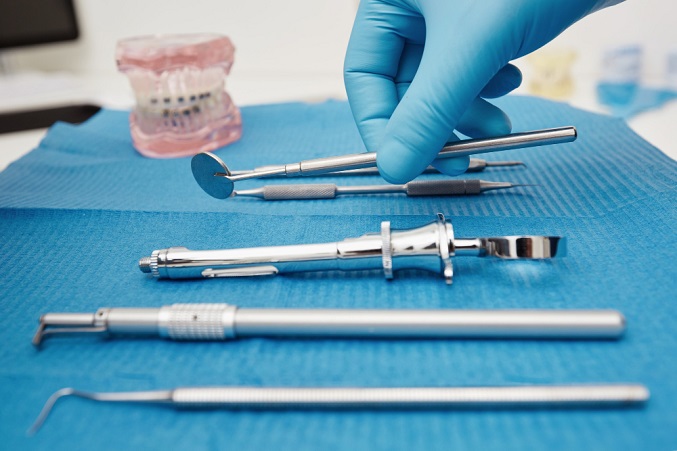
Choosing the Right Mini Fragment Implants for Optimal Fixation
In orthopedic and trauma surgery, precision and stability are paramount. When it comes to small bone fractures, Mini Fragment Implants play a crucial role in ensuring proper fixation and optimal healing. Whether you're a surgeon looking for reliable implants or a medical professional seeking to understand the best options available, choosing the right Mini Fragment Plates and Screws can significantly impact patient outcomes.
In this guide, we'll explore what Mini Fragment Implants are, their applications, the different types available, and the key factors to consider when choosing the best implant for small bone fixation.
What Are Mini Fragment Implants?
Mini Fragment Implants are small orthopedic plates and screws used in fracture fixation of small bones, such as those found in the hand, wrist, foot, ankle, and face. These implants provide rigid internal fixation, promoting faster bone healing while minimizing surgical trauma. They are commonly used in orthopedic trauma, reconstructive surgeries, and elective procedures where precision is required.
Common Applications of Mini Fragment Implants
- Mini Fragment Implants are widely used in various medical procedures:
- In hand and wrist fractures, they help in fixing metacarpal and phalangeal fractures.
- They stabilize small fractures in tarsal and metatarsal bones during foot and ankle surgeries.
- Maxillofacial surgeries use these implants for reconstructive procedures for facial fractures.
- Pediatric orthopedic surgery benefits from these implants for treating small bone fractures in children.
They play a crucial role in trauma fixation, particularly for high-energy injuries requiring precise stabilization.
Types of Mini Fragment Implants
Mini Fragment systems typically consist of plates and screws of varying sizes and materials. The most common types include:
- Mini Fragment Plates
- Mini Fragment Plates come in different shapes and configurations to accommodate various bone structures:
- Straight Plates are used for linear fractures.
- L-Shaped Plates are designed for corner fractures and complex structures.
- T-Plates work well for fractures near joints or small bone intersections.
- Y-Plates are used in specialized anatomical regions.
- Anatomical Plates are pre-contoured to match specific bone shapes, reducing the need for bending.
Mini Fragment Screws
- Mini Fragment Screws are used to fix plates onto bones or for standalone fracture fixation:
- Cortical Screws are designed for dense cortical bone, providing strong fixation.
- Cancellous Screws are used for spongy bone, offering better grip in softer structures.
- Locking Screws provide angular stability, often used in locking plate systems.
- Non-Locking Screws allow micro-movement at the fracture site for controlled healing.
Factors to Consider When Choosing Mini Fragment Implants
Fracture Location and Complexity
The type and location of the fracture significantly influence implant selection. Straight plates may be sufficient for linear fractures, while complex fractures require anatomically contoured plates.
Implant Material
Mini Fragment Implants are available in different materials, including:
- Titanium, which is biocompatible, corrosion-resistant, and lightweight.
- Stainless Steel is durable and cost-effective but may cause allergic reactions in some patients.
- Bioabsorbable Materials dissolve over time, eliminating the need for surgery to remove them.
- Titanium implants are the preferred choice due to their superior strength, biocompatibility, and radiolucency in imaging.
Plate and Screw Size
Mini Fragment Systems typically come in 1.5mm, 2.0mm, and 2.7mm sizes. The selection depends on the bone size, fracture pattern, and patient anatomy.
Locking vs. Non-Locking System
- Locking Plates & Screws provide superior stability, especially in osteoporotic bones.
- Non-Locking Plates & Screws allow slight movement, which can be beneficial for certain types of fractures.
Biomechanical Strength
The implant should provide adequate stability without causing unnecessary stress shielding. Anatomically shaped plates offer better distribution of forces, reducing complications such as implant failure.
Surgeon Preference and Surgical Techniques
Surgeons often prefer implants that are easy to handle, provide secure fixation, and require minimal bending or contouring. Some systems come with pre-contoured plates, making surgery faster and more precise.
Compatibility with Instrumentation
Ensure that the selected Mini Fragment system is compatible with your existing surgical instruments and power tools. Some plates require specialized screwdrivers or drills, so it's essential to check before purchasing.
Advantages of Using Mini Fragment Systems
Mini Fragment Implants offer several benefits:
- They are minimally invasive, requiring small incisions and reducing tissue trauma.
- Stable fixation promotes faster bone healing.
- Their versatile application makes them suitable for various small bone fractures.
- High biocompatibility, especially in titanium implants, reduces the risk of rejection.
- Improved patient outcomes include less post-operative pain and quicker recovery times.
Best Practices for Using Mini Fragment Implants
To maximize the benefits of Mini Fragment Implants, follow these best practices:
- Preoperative Planning: Assess fracture type and select the appropriate implant.
- Proper Plate Positioning: Avoid excessive pressure on soft tissues.
- Optimal Screw Placement: Ensure sufficient bone purchase for stability.
- Use of Image-Guided Surgery: Improves placement accuracy.
- Post-Operative Monitoring: Regular follow-ups to assess healing.
Where to Buy High-Quality Mini Fragment Implants
At GWS Surgicals, we offer a wide range of Mini Fragment Plates, Screws, and Fixation Systems designed for superior stability and precision. Our implants are made from medical-grade titanium and stainless steel, ensuring durability and biocompatibility.
👉 Browse Our Mini Fragment Implants
Conclusion
Choosing the right Mini Fragment Implants is essential for successful fracture fixation and optimal healing. Factors such as fracture location, implant material, size, and biomechanical strength play a crucial role in determining the best implant for each case. By selecting high-quality plates and screws, surgeons can achieve better fixation, faster healing, and improved patient outcomes.
For premium Mini Fragment Systems, explore our expertly designed orthopedic implants today!
Leave a Comment
© Copyright © 2024 gwsmed.com | GWS Surgicals LLP. All rights reserved.
| |




Comment (0)
No Comments Yet. Be the first one.